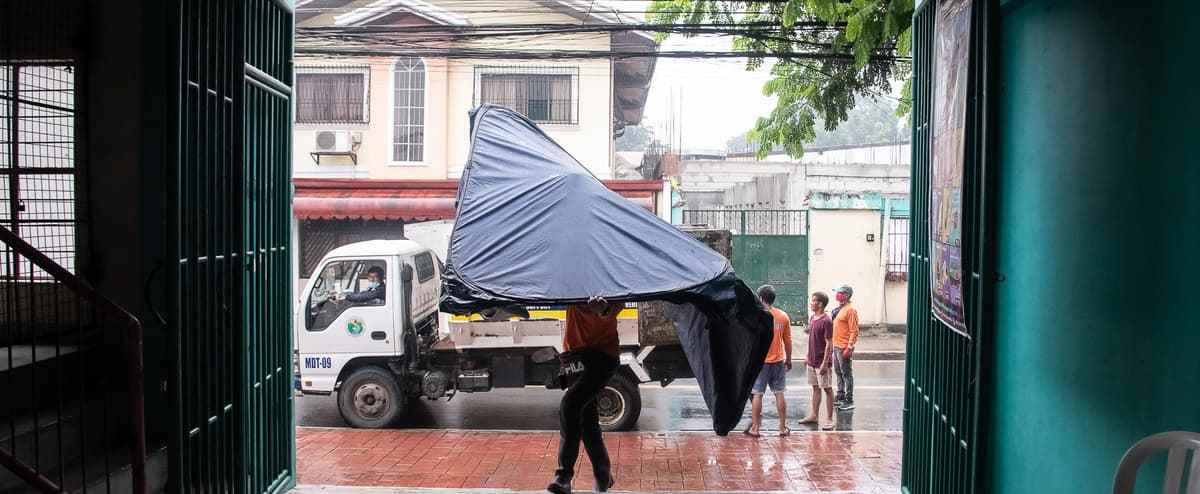Super Typhoon Noru began to hit the Philippines on Sunday, raising fears of flooding and crop destruction, and prompting thousands to evacuate their homes.
• Read also: Japan: Typhoon Talas kills two and causes power outages
• Read also: Typhoon Nanmadol in Japan: four dead, more than 100 injured
The super-typhoon has started inflicting strong winds and heavy rains on the heavily populated main island of Luzon. Noru made landfall at 5:30 p.m. local time (0930 GMT) in the municipality of Burdeos on the Polillo Islands, which is part of the province of Quezon.
Accompanied by winds of 195 km / h, Noru, called Karding in the Philippines, is the most powerful typhoon recorded this year in the country. It strengthened with “unprecedented” rapidity according to the National Weather Service.
The Philippine Meteorological Service issued an alert on Sunday evening predicting “severe flooding” in highly exposed and vulnerable areas of the capital, Manila, and nearby provinces.
“We ask residents of areas at risk to obey calls to evacuate when necessary,” said Philippine Police Chief General Rodolfo Azurin.
“The winds were strong this morning,” said Ernesto Portillo, 30, working as a cook in the coastal township of Infanta, Quezon province.
“We are a little worried,” he added. We put our belongings in safety and we went shopping to have food in case of need”.
The Philippines is hit by about 20 typhoons each year, a phenomenon that tends to worsen due to climate change, according to scientists.
Nine months ago, another super-typhoon killed more than 400 people in the center and south of the country.
A typhoon is called a “super-typhoon” when its winds exceed a certain speed, the threshold varying according to the national meteorological services (in the Philippines this threshold is 185 km/h).
The speed of the winds accompanying Noru increased by 90 km / h in just 24 hours, an intensification “unprecedented”, estimated the weather forecaster Robb Gile.
“Explosive escalation”
“Typhoons are like engines, they need fuel and an exhaust to run,” Gile said.
According to him, the Pacific-born Noru “has good fuel because he has plenty of warm waters along his path, and he has good exhaust in the upper layers of the atmosphere. It’s a recipe for explosive escalation.”
According to the meteorological service, the wind speed could reach 205 km/h on land.
The service warned of flooding, landslides and strong waves in the affected areas. Schools will remain closed on Monday and maritime traffic has been suspended.
In the Manila region, hit by the typhoon 100 km northeast of the capital where 13 million people live, compulsory evacuations were underway in a few high-risk areas, including slums located along the rivers.
“I evacuated the house where I live because I’m afraid of the rapid rise in water,” Gloria Pérez, 68, told AFP. roofs of a basketball court. “I’ve been through this before and I don’t want to go through it again.”
Dozens of flights to or from the Philippine capital were suspended on Monday.
More than 8,300 people left their homes ahead of the typhoon, including residents of several townships in Quezon province, authorities said.
In neighboring Aurora province, residents of Dingalan municipality have also been sent to shelters.
“People who live near the coast have been told to evacuate. We live far from the coast so we stayed. We are more worried about the water coming from the mountains,” said Rhea Tan, 54, a restaurateur in Dingalan.
The typhoon is expected to weaken as it passes over Luzon Island, before moving away into the South China Sea on Monday towards Vietnam.



